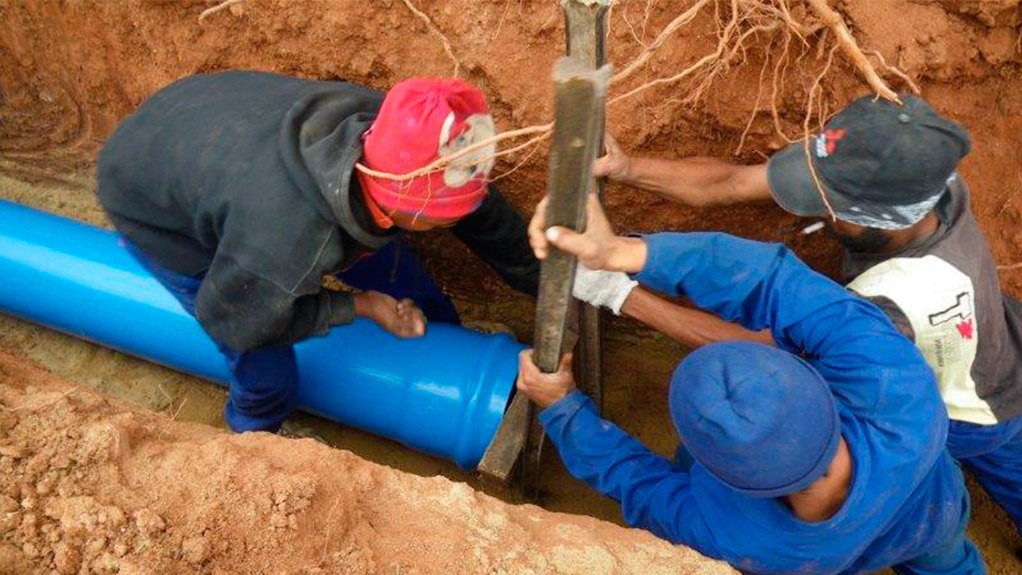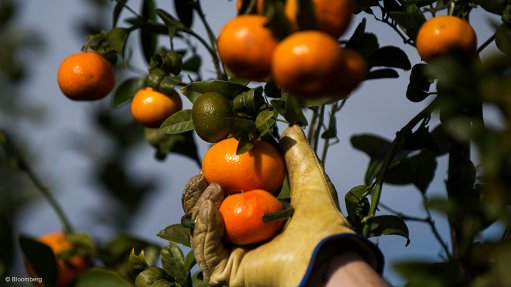Field pressure testing ensures that PVC pipes do not leak
This article has been supplied as a media statement and is not written by Creamer Media. It may be available only for a limited time on this website.
DPI Plastics has developed a ‘how to’ guide on field pressure testing to ensure that the integrity of a pipeline is not compromised.
A field pressure test is used to test the integrity of pipe joints completed on site. This test is covered by the SANS 2001:DP2 – Medium pressure pipelines standard, explains Renier Snyman, technical and product manager at DPI Plastics.
Modern plastic pipes are manufactured under controlled conditions, with hydrostatic pressure testing of pipes and joints to confirm minimum performance requirements. “However, when the pipe is laid on-site, the jointing quality and method is outside the control of the manufacturer,” Snyman highlights. Field pressure testing establishes that the pipeline does not leak. The test pressure is raised above the operating pressure of the pipeline to allow the pipeline to settle under that pressure and to highlight possible leaks that would otherwise only develop after some time under pressure.
According to SANS 2001: DP 2, the test pressure must be 1.5 times the working pressure of the pipeline, up to a maximum of 10 bar. Above 10 bar, the test pressure must be the working pressure of the pipeline, plus 5 bar. This requirement refers to the working pressure of the pipeline, namely the pressure the pipeline will operate under, and not the pressure class of the pipe.
For example, a pipeline with an operating pressure of 16 bar should be tested at 21 bar (16 bar + 5 bar). However, testing is often conducted at 1.5 times operating pressure, regardless if the operating pressure is above 10 bar or not. In this instance, the difference between the correct pressure above and a 1.5 times operating pressure (24 Bar) is 3 bar.
In addition, the test pressure must be between 1.25 times and 1.5 times the operating pressure at any point in the pipeline. This requirement makes allowance for variation in the test pressure. Due to differences in static head in the test section, it allows the test pressure to vary between 1.25 and 1.5 times the operating pressure at any point along the test section.
Comments
Press Office
Announcements
What's On
Subscribe to improve your user experience...
Option 1 (equivalent of R125 a month):
Receive a weekly copy of Creamer Media's Engineering News & Mining Weekly magazine
(print copy for those in South Africa and e-magazine for those outside of South Africa)
Receive daily email newsletters
Access to full search results
Access archive of magazine back copies
Access to Projects in Progress
Access to ONE Research Report of your choice in PDF format
Option 2 (equivalent of R375 a month):
All benefits from Option 1
PLUS
Access to Creamer Media's Research Channel Africa for ALL Research Reports, in PDF format, on various industrial and mining sectors
including Electricity; Water; Energy Transition; Hydrogen; Roads, Rail and Ports; Coal; Gold; Platinum; Battery Metals; etc.
Already a subscriber?
Forgotten your password?
Receive weekly copy of Creamer Media's Engineering News & Mining Weekly magazine (print copy for those in South Africa and e-magazine for those outside of South Africa)
➕
Recieve daily email newsletters
➕
Access to full search results
➕
Access archive of magazine back copies
➕
Access to Projects in Progress
➕
Access to ONE Research Report of your choice in PDF format
RESEARCH CHANNEL AFRICA
R4500 (equivalent of R375 a month)
SUBSCRIBEAll benefits from Option 1
➕
Access to Creamer Media's Research Channel Africa for ALL Research Reports on various industrial and mining sectors, in PDF format, including on:
Electricity
➕
Water
➕
Energy Transition
➕
Hydrogen
➕
Roads, Rail and Ports
➕
Coal
➕
Gold
➕
Platinum
➕
Battery Metals
➕
etc.
Receive all benefits from Option 1 or Option 2 delivered to numerous people at your company
➕
Multiple User names and Passwords for simultaneous log-ins
➕
Intranet integration access to all in your organisation

























